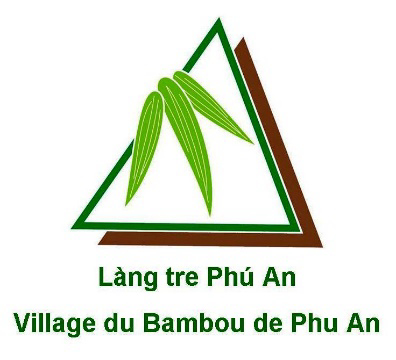
Phu AN Bambou village-Viet Nam Université Nationale de HCMV
Phu An Bamboo village was created in 1999 as a conservatory of bamboo biodiversity, incorporating numerous harvests mainly from Vietnam and also from Laos. This work was also financed by a quadripartite cooperation project including the Rhône-Alpes Region, the Province of Binh Duong, the University of Natural Sciences - National University of HCMV, and the Natural Park of Pilat. Based on these results, the National University of HCMV created a Research Center for the Preservation of Natural Resources (CRC) in 2008.
1.Bamboo preservation
The living specimen collection aims to preserve bamboo species and their genetic diversity. It houses over 350 taxa, including threatened and endangered forest species found in different regions of Viet Nam, as well as more common species used for landscape restoration and handicraft production.
The Herbarium consists of two types of herbaria: the first collected during surveys throughout Viet Nam, and the second from specimens collected in Phu An bamboo village.
Researchers at the Center have undertaken a meticulous and arduous work of documentation, identification and determination. The preservation of bamboo species in one structure facilitates both fundamental and applied research in taxonomy, ecology, ethnobotany and processing.
2.Developping a reforestation strategy
The organization also conducts research activities to improve the value of bamboo. The research center has increased its activities: tests are conducted to determine the physical and chemical properties of each bamboo species, allowing the classification of specimens according to their optimal use. This information is provided to local farmers to help them in selecting appropriate bamboo species for production, restoration, handicrafts or industrial materials. Bamboo species can thus be recommended based on specific properties such as strength, growth pattern and timber production. The organization is also concerned with species diversification, and encourages farmers to plant several varieties of bamboo. This approach helps locals to adjust and adapt to fluctuating market demands. Some species are better suited for paper pulp, for wall or ceiling decoration, for toothpicks, or for baskets and building materials. Researchers are always harvesting new varieties of bamboo to meet the needs of each new area they explore.
Different features of bamboo species have also been tested, including soil decontamination and phytoremediation, carbon fixation and strength for industrial constructions. A program to identify DNA sequences of different bamboo varieties is currently underway to facilitate accurate species identification. In the area of sustainable development, Phu An Bamboo Village undertakes events to enable local farmers to improve their quality of life. The approach focuses on equipment, information, and empowering people to make informed productive decisions. Communication and transmission of knowledge are the cornerstones of this field of activity. Environmental education focuses on village children and university students, encouraging active participation in the continued efforts and instilling a spirit of collective responsibility and sharing for the well-being of the community and its surrounding forests. Phu An Bamboo Village also trains farmers to improve soil fertility and preservation, to use organic farming techniques to protect against water loss and to manage waste.
3.Reconciling traditional knowledge and new technologies
Among the most notable innovations of Phu An Bamboo Village is the blending of traditional knowledge and advanced research for bamboo preservation and management. New technologies are constantly being tested for application and adaptation, including in the cutting-edge field of phytoremediation, which may reveal an important role for certain bamboo species in wastewater management and the treatment of contaminated soil. Researchers have also made great strides in demonstrating that bamboo fibers can be used in composite materials and that bamboo charcoal can be activated. In addition, it has been possible to determine how different species of bamboo adapt to new living conditions, as well as the most effective techniques for pruning, planting, transplanting and fertilizing.
The management of morphological descriptive characters was initiated thanks to the software XPER2, XPER3, in collaboration with the Laboratoire d'Informatique et de Systématique (LIS) related to the MNHN and Sorbonne University. The bamboo herbaria of Phu An (4000 parts) have been classified in alphabetical order of genera, after specimen assembly and standardized labeling to facilitate their digitization. For each taxon, after classification, parts that were collected together are generally grouped together (leaves, sheath, branches, stems).
Herbaria are numerized and digitized following international standards, and using the RECOLNAT, SONNERAT and MNHN databases.
Contacts
Jacques GURGAND, Collecteur- chercheur : jacques.gurgand@gmail.com
NGUYEN Khac Dieu, chercheur : nguyenkhacdieu01@gmail.com
DIEP My Hanh, Présidente- Enseignante chercheur :mhg286@gmail.com
site internet : https://ecobambou-phuan.org/
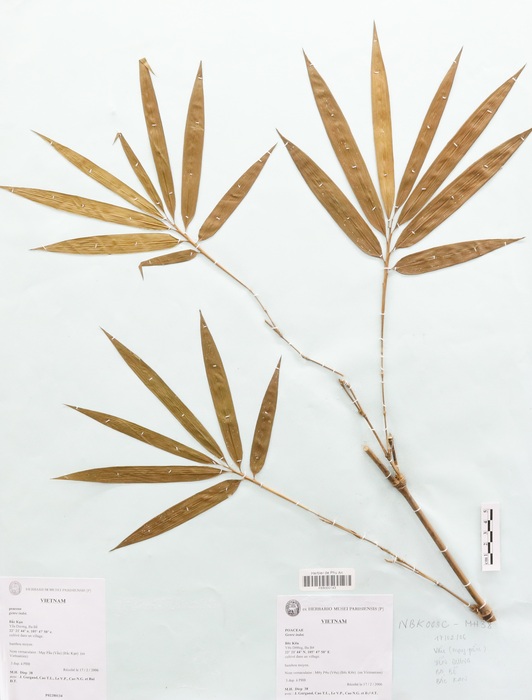
Poaceae récoltée en 2006 © Phu An Bambou village- Centre de Recherche pour la Conservation des Ressources Naturelles- Université des Sciences- Viet Nam Université de HCMV.
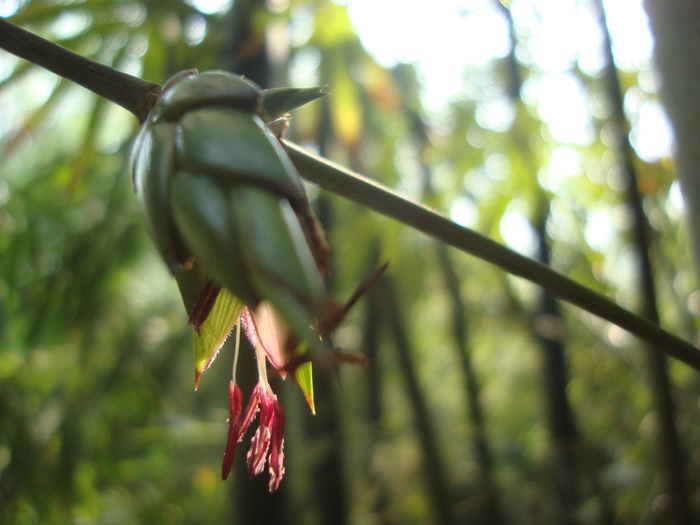
Bambusa gurgandii © Phu An Bambou village- Centre de Recherche pour la Conservation des Ressources Naturelles- Université des Sciences- Viet Nam Université de HCMV.
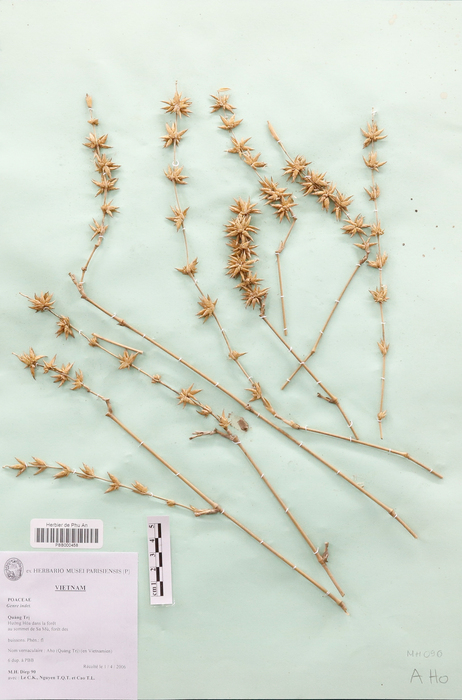
Gigantochloa sp. récoltée en 2006 © Phu An Bambou village- Centre de Recherche pour la Conservation des Ressources Naturelles- Université des Sciences- Viet Nam Université de HCMV.
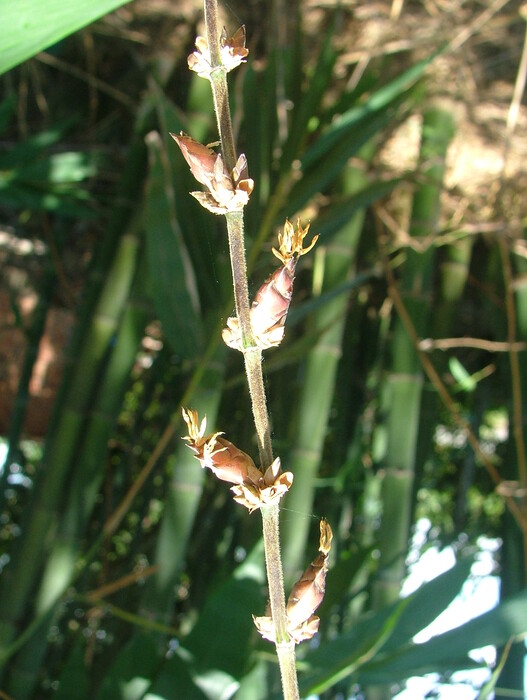
Gigantochloa cochinchinensis A.Camus © Phu An Bambou village- Centre de Recherche pour la Conservation des Ressources Naturelles- Université des Sciences- Viet Nam Université de HCMV.
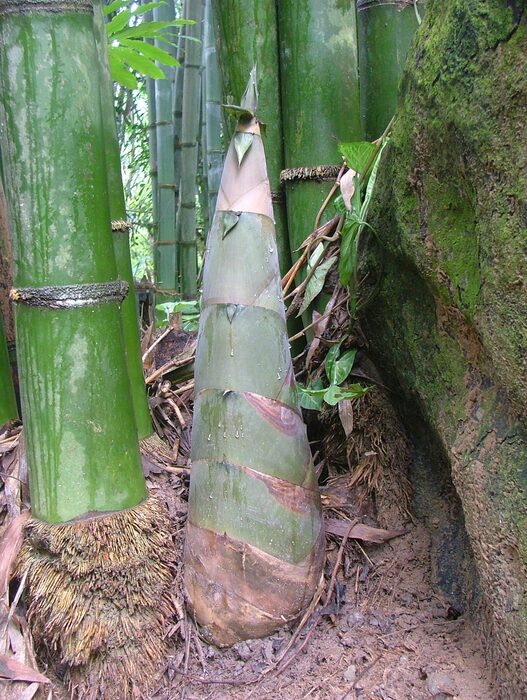
Gigantochloa cochinchinensis A.Camus © Phu An Bambou village- Centre de Recherche pour la Conservation des Ressources Naturelles- Université des Sciences- Viet Nam Université de HCMV.

PBB Herbarium © Phu An Bambou village- Centre de Recherche pour la Conservation des Ressources Naturelles- Université des Sciences- Viet Nam Université de HCMV.
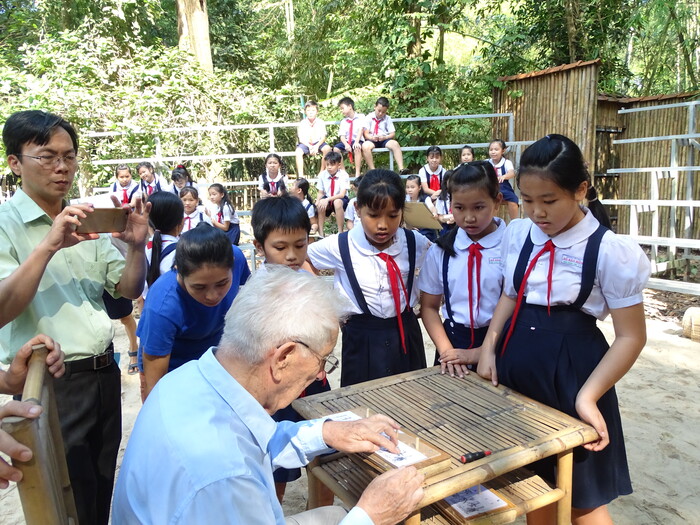
Teaching children how to identify bamboos on the Discovery Trail through the Phu An bamboo village. © Phu An Bambou village- Centre de Recherche pour la Conservation des Ressources Naturelles- Université des Sciences- Viet Nam Université de HCMV.
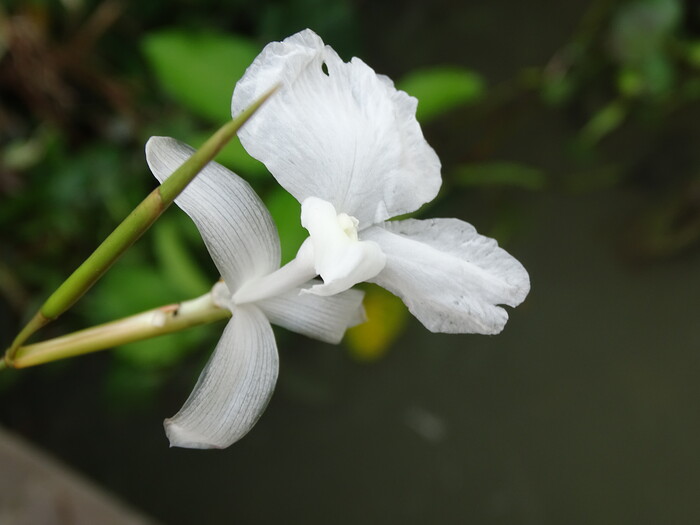
Marantaceae observée en 2018 © Phu An Bambou village- Centre de Recherche pour la Conservation des Ressources Naturelles- Université des Sciences- Viet Nam Université de HCMV.